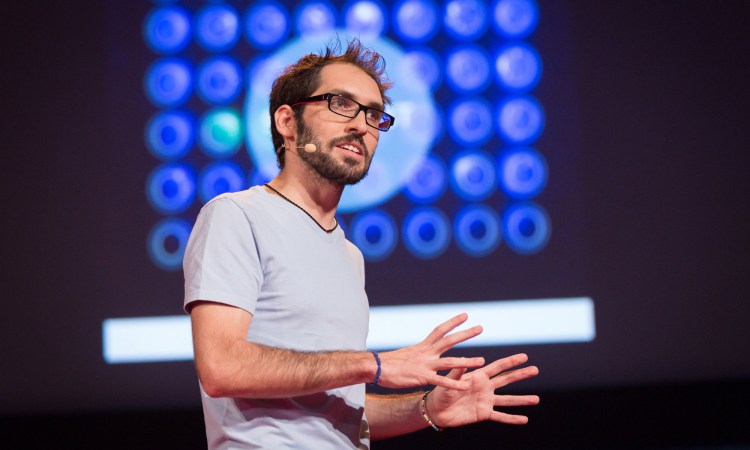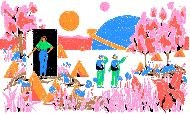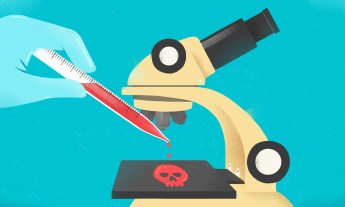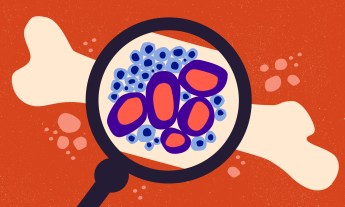
About a year ago, Jorge Soto’s aunt started suffering back pain. It was a normal injury for someone who played tennis for 30 years, but when she wasn’t feeling better after a while, doctors decided to do further tests. First they did X-rays. Then they did a biopsy. Finally, six months later, they discovered that his aunt had stage 3 lung cancer, even though she had no risk factors — this is someone who never smoked or drank, who had been playing sports half her life.
Does this story seem familiar? One out of three people will be diagnosed with some type of cancer during their lifetime, and one out of four will die of it, notes Soto. (Watch his TED Talk: The future of early cancer detection?) Yet even though we know that catching cancer early is the closest thing we have to a silver bullet against it, most of us still have to wait for symptoms to indicate that something’s wrong. Why? Because that’s the way cancer diagnosis has been done since the beginning of history. “We have 21st-century treatments and drugs, but 20th-century procedures and processes for diagnosis,” Soto said last week onstage at TEDGlobal 2014. A few minutes later, he publicly debuted a working prototype of what progress could look like: a mobile, noninvasive, open-source test that looks for early signs of multiple forms of cancer.
Together with RNA expert Fay Christodoulou and other scientists and technologists from Chile, Panama, Mexico, and beyond (they all met at Singularity University), Soto, an engineer, has been on a journey to make cancer screening easier, cheaper and more accessible. He believes they have found a reliable and accurate way of identifying multiple types of cancer through a blood test detecting small molecules called microRNA.
Although the test is still in the early stages of development for broader use, so far Soto and his team have used it to successfully identify pancreatic, lung and breast cancer in humans. His end goal: a simple, noninvasive, accurate and affordable test that combines state-of-the-art microbiology with data science to screen for faint signs of cancer. To bring that possibility closer, Soto and his team are making the entire design of the device open-source.
“What we’re doing is decentralizing the lab,” Soto told TED Ideas in a call Sunday from Mexico City. “With this prototype, you do not need to have a central facility where everybody sends their samples. You can do the reaction in very simple devices like the one we developed.”
Yet the regulation around the platform in the US “is with a question mark,” Christodoulou told TED Ideas. “We don’t know how that will work. To convince the regulatory agencies that this device can be used a diagnostic tool for disease? That can take up to 2-3 years.”
In the meantime, they’ll continue to partner with institutions that can benefit from their technology to find the signal in the noise of microRNA data. “There’s a lot of scientific research out there right now, so what we do is identify microRNA patterns in the blood associated with cancer and correlate them with the research,” Christodoulou told TED Ideas.
Right now cancer detection often happens at stage 3 or 4. That’s too late, and too expensive, for both families and humanity. “Today my aunt is fighting bravely, but I want fights like hers to be very rare,” said Soto last week at TEDGlobal. “I want to see the day when cancer is treated easily because it can be routinely diagnosed in the very early stages.” When that happens, the way we see cancer may radically change.
[ted id=2109]
Photos by James Duncan Davidson/TED.













